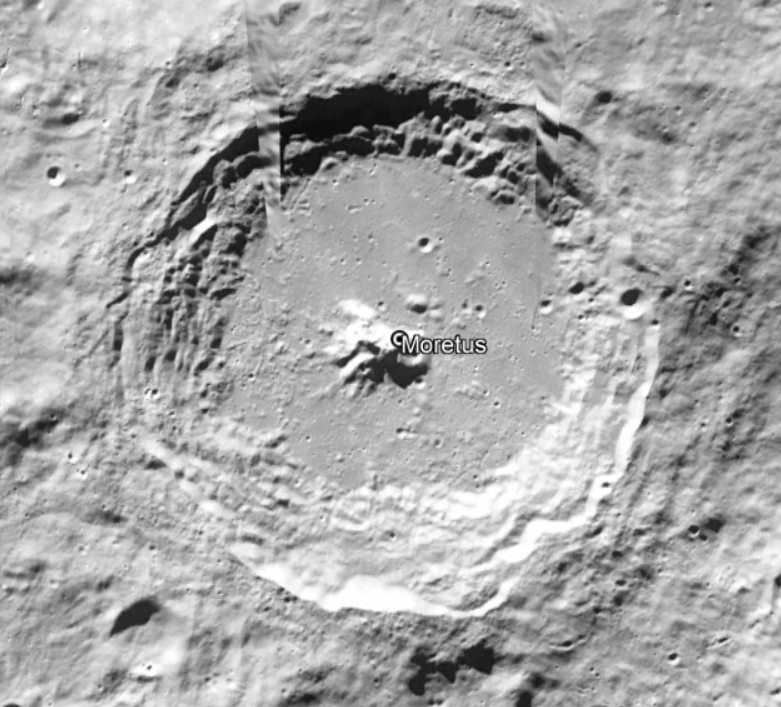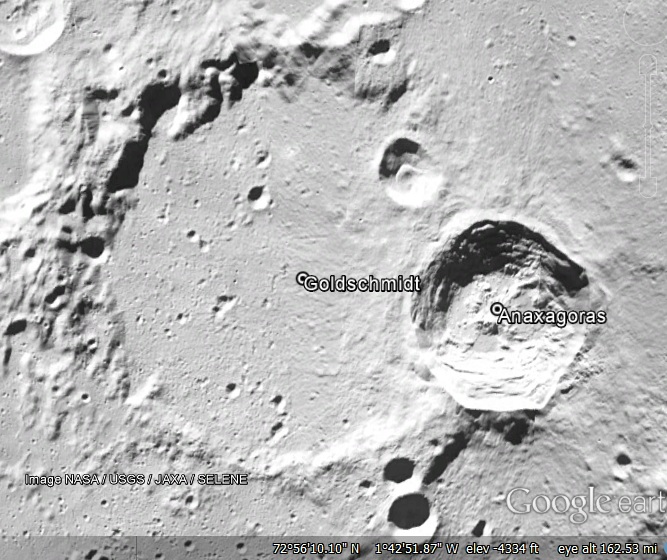It looks like you're using an Ad Blocker.
Please white-list or disable AboveTopSecret.com in your ad-blocking tool.
Thank you.
Some features of ATS will be disabled while you continue to use an ad-blocker.
16
share:
I present some backyard footage taken with a Celestron AstroMaster 130 + iPhone 11.
In the footage you can see the southern hemisphere of the Moon and a large crater with something large inside it reflecting light and creating a shadow on the rim. I tried to look through topographic maps but did not find anything in correspondense.
Is this a crater peak? Or…
In the footage you can see the southern hemisphere of the Moon and a large crater with something large inside it reflecting light and creating a shadow on the rim. I tried to look through topographic maps but did not find anything in correspondense.
Is this a crater peak? Or…
originally posted by: djz3ro
a reply to: OnWhiteMars
Could it be the remains of the meteor that caused the crater?
Big mound of meteor mate.
I wonder at the colour of it.
a reply to: OnWhiteMars
Looks to me like a shadow of the central peak.
If you look slightly to the left you can see the tip of the peak is in sunlight.
Looks to me like a shadow of the central peak.
If you look slightly to the left you can see the tip of the peak is in sunlight.
a reply to: Spacespider
I'd hazard a guess that this is Moretus.
Apparently well know for its central peak.
I'd hazard a guess that this is Moretus.
Apparently well know for its central peak.
a reply to: Darkstar2
Yep, Moretus and it's central peak. Here it is shown next to a still from the video:

en.wikipedia.org...(crater)
Yep, Moretus and it's central peak. Here it is shown next to a still from the video:

en.wikipedia.org...(crater)
As others have mentioned, it's a mountain inside the crater.
Craters, especially large ones, often have what is called a central uplift mountain in the center. It's from the land rebounding during the impact event that created the crater. At the moment of impact, the high energies involved make the rocky crust act like a plastic ("plastic" as in pliable and ductile).
It is something like the rebound in the middle of dripping water:
Craters, especially large ones, often have what is called a central uplift mountain in the center. It's from the land rebounding during the impact event that created the crater. At the moment of impact, the high energies involved make the rocky crust act like a plastic ("plastic" as in pliable and ductile).
It is something like the rebound in the middle of dripping water:
edit on 6/29/2021 by Soylent Green Is People because: (no reason given)
Moretus - A mosaic courtesy of Google Moon.

Interestingly, the size range for craters having a central peak is surprisingly tight. Although there are exceptions, we generally only see central peaks in craters 30 - 70 miles from rim to rim. Below that, the heat of the impact is dissipated by the blast, leaving a bowl-shaped crater. Above that the impact melt stays hot enough long enough to melt the central peak like an ice cube in water, leaving large, flat-bottomed craters.


originally posted by: Soylent Green Is People
Craters, especially large ones, often have what is called a central uplift mountain in the center. It's from the land rebounding during the impact event that created the crater. At the moment of impact, the high energies involved make the rocky crust act like a plastic ("plastic" as in pliable and ductile).
Interestingly, the size range for craters having a central peak is surprisingly tight. Although there are exceptions, we generally only see central peaks in craters 30 - 70 miles from rim to rim. Below that, the heat of the impact is dissipated by the blast, leaving a bowl-shaped crater. Above that the impact melt stays hot enough long enough to melt the central peak like an ice cube in water, leaving large, flat-bottomed craters.

a reply to: Dalamax
Looks like representative examples of impact phenomenon, as explained in my post.
How would you differentiate between impact effects and electric arc effects?
Be specific.
Impact events and their results have been observed for a long time. The mechanism (objects colliding at high speed) is simple, common, measured, reproducible and well-understood.
Super-powerful electric arc phenomenon capable producing craters with raised rims miles deep and tens of miles across have never been observed, and there is no known mechanism for generating such arcs based on the information we have gathered about the space environment over the last 60+ years. There is no support for the idea other than "it looks like it" even though geologists and physicists can explain in detail all of the features that indicate an impact origin.
Looks like representative examples of impact phenomenon, as explained in my post.
How would you differentiate between impact effects and electric arc effects?
Be specific.
Impact events and their results have been observed for a long time. The mechanism (objects colliding at high speed) is simple, common, measured, reproducible and well-understood.
Super-powerful electric arc phenomenon capable producing craters with raised rims miles deep and tens of miles across have never been observed, and there is no known mechanism for generating such arcs based on the information we have gathered about the space environment over the last 60+ years. There is no support for the idea other than "it looks like it" even though geologists and physicists can explain in detail all of the features that indicate an impact origin.
edit on 2-7-2021 by Saint Exupery because: (no reason given)
new topics
-
Inca stone masonry at Sacsayhuaman, Ollantaytambo and the Sun Temple
Ancient & Lost Civilizations: 1 hours ago -
President-Elect TRUMP Picks Former Florida A.G. PAM BONDI to be U.S. Attorney General.
2024 Elections: 6 hours ago -
A Mysterious Orb filmed over NYC by local news
Aliens and UFOs: 7 hours ago -
Putin will warn civilians in targeted areas
World War Three: 8 hours ago -
The Popular Vote does not matter
Political Issues: 9 hours ago
top topics
-
International Criminal Court Issues Arrest Warrant For Netanyahu
Mainstream News: 16 hours ago, 13 flags -
Gaetz withdraws from attorney general consideration
US Political Madness: 12 hours ago, 12 flags -
President-Elect TRUMP Picks Former Florida A.G. PAM BONDI to be U.S. Attorney General.
2024 Elections: 6 hours ago, 12 flags -
Is Russia Using a New Type of Beam Weapon Against Ukraine?
Weaponry: 14 hours ago, 11 flags -
Putin will warn civilians in targeted areas
World War Three: 8 hours ago, 11 flags -
racist rant, but she made the arguement to get rid of DEI
US Political Madness: 17 hours ago, 10 flags -
The Popular Vote does not matter
Political Issues: 9 hours ago, 8 flags -
Bridgewater Triangle
General Chit Chat: 13 hours ago, 7 flags -
Here is why Western leaders in NATO have zero fear of nuclear warfare. At all. Zero.
World War Three: 15 hours ago, 6 flags -
A Mysterious Orb filmed over NYC by local news
Aliens and UFOs: 7 hours ago, 4 flags
active topics
-
Inca stone masonry at Sacsayhuaman, Ollantaytambo and the Sun Temple
Ancient & Lost Civilizations • 1 • : randomtangentsrme -
International Criminal Court Issues Arrest Warrant For Netanyahu
Mainstream News • 39 • : JJproductions -
Is Russia Using a New Type of Beam Weapon Against Ukraine?
Weaponry • 19 • : KrustyKrab -
Well, here we go red lines crossed Biden gives the go ahead to use long range missiles
World War Three • 320 • : Tolkien -
FEMA Head Admits Agency Skipped 20 Homes with Trump Signs
Mainstream News • 18 • : EyeoftheHurricane -
Biden at 81: Often sharp and focused but sometimes confused and forgetful
2024 Elections • 12 • : WeMustCare -
A Mysterious Orb filmed over NYC by local news
Aliens and UFOs • 4 • : EduardoLopez -
Well we know Putins ICBMs won't fail in their silos
World War Three • 120 • : yuppa -
Putin will warn civilians in targeted areas
World War Three • 31 • : KrustyKrab -
-@TH3WH17ERABB17- -Q- ---TIME TO SHOW THE WORLD--- -Part- --44--
Dissecting Disinformation • 3343 • : 777Vader
16

